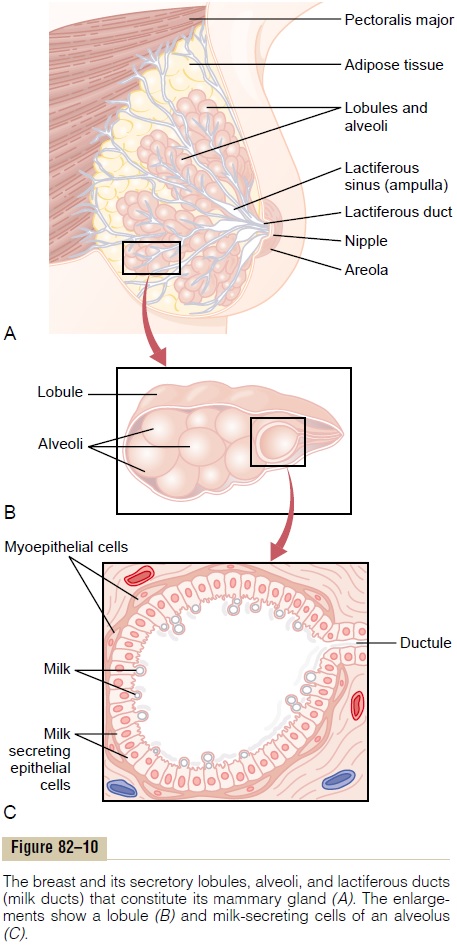Chapter: Medical Physiology: Pregnancy and Lactation
Development of the Breasts - Lactation

Lactation
Development of the Breasts
The breasts, shown in Figure 82–10, begin to develop at puberty. This development is stimulated by the estrogens of the monthly female sexual cycle; estro-gens stimulate growth of the breasts’ mammary glands plus the deposition of fat to give the breasts mass. In addition, far greater growth occurs during the high-estrogen state of pregnancy, and only then does the glandular tissue become completely developed for the production of milk.

Growth of the Ductal System—Role of the Estrogens. Allthrough pregnancy, the large quantities of estrogens secreted by the placenta cause the ductal system of the breasts to grow and branch. Simultaneously, the stroma of the breasts increases in quantity, and large quantities of fat are laid down in the stroma.
Also important for growth of the ductal system are at least four other hormones: growth hormone, pro-lactin, the adrenal glucocorticoids, and insulin.Each ofthese is known to play at least some role in protein metabolism, which presumably explains their function in the development of the breasts.

Development of the Lobule-Alveolar System—Role of Progesterone. Final development of the breasts into milk-secreting organs also requires progesterone.Once the ductal system has developed, progesterone—acting synergistically with estrogen, as well as with the other hormones just mentioned—causes additional growth of the breast lobules, with budding of alveoli and development of secretory characteristics in the cells of the alveoli. These changes are analogous to the secretory effects of progesterone on the endometrium of the uterus during the latter half of the female menstrual cycle.
Related Topics